Topic 3
Build your own MindKit
In this section, you’ll learn about some different tools and strategies that you can use to help yourself feel better. You can use these tools to put together your own MindKit for when times get tough!
Want to listen to this information? Play the audio track and follow along through this section as you listen!
(Narrator) When you are going through tough times, you can use certain tools and strategies to help you feel better. These are called coping tools.
Different ones may work better for different situations. You might also find that some work better for you than others.
The key is to try out as many as you can and build a toolkit with the ones you like best.
Here are five tools and strategies to start you off:
Make a few playlists for different emotions and use the right music to lift your mood. For example, you can create a playlist of energizing songs for when you feel sad.
Train your inner coach, or the voice in your head that helps you think positive thoughts about yourself and your life. The opposite is your inner critic that tells you all the reasons you aren’t good enough and focuses on the negative. Practise thinking in a way that trains your inner coach to be stronger than your inner critic. For example, instead of thinking: “My life will never be like it was,” try thinking: “Today might be a bad day but it won’t last forever. Tomorrow will be better.”
Make a list of your favourite positive sayings or phrases. Read these sayings when you need a bit of hope and encouragement. Your thoughts can be powerful in helping you deal with difficult situations or achieve your goals.
Create a list of supportive people you know you can talk to, such as friends, Family members, teachers or coaches. When you need to, reach out to them.
Try a countdown to engage your five senses and focus on what is around you. Look for five things you can see, four things you can touch, three things you can hear, two things you can smell and one thing you can taste.

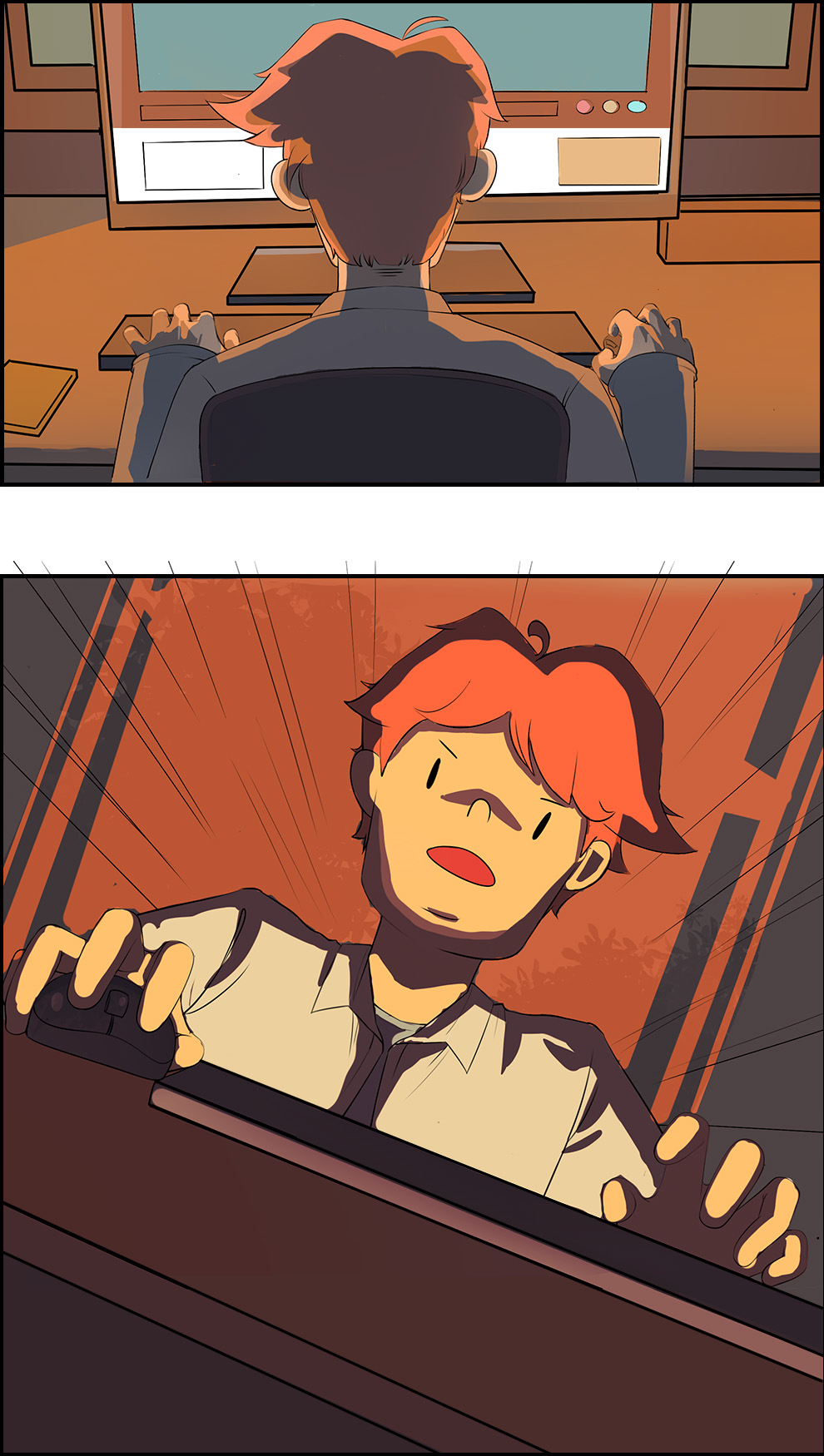
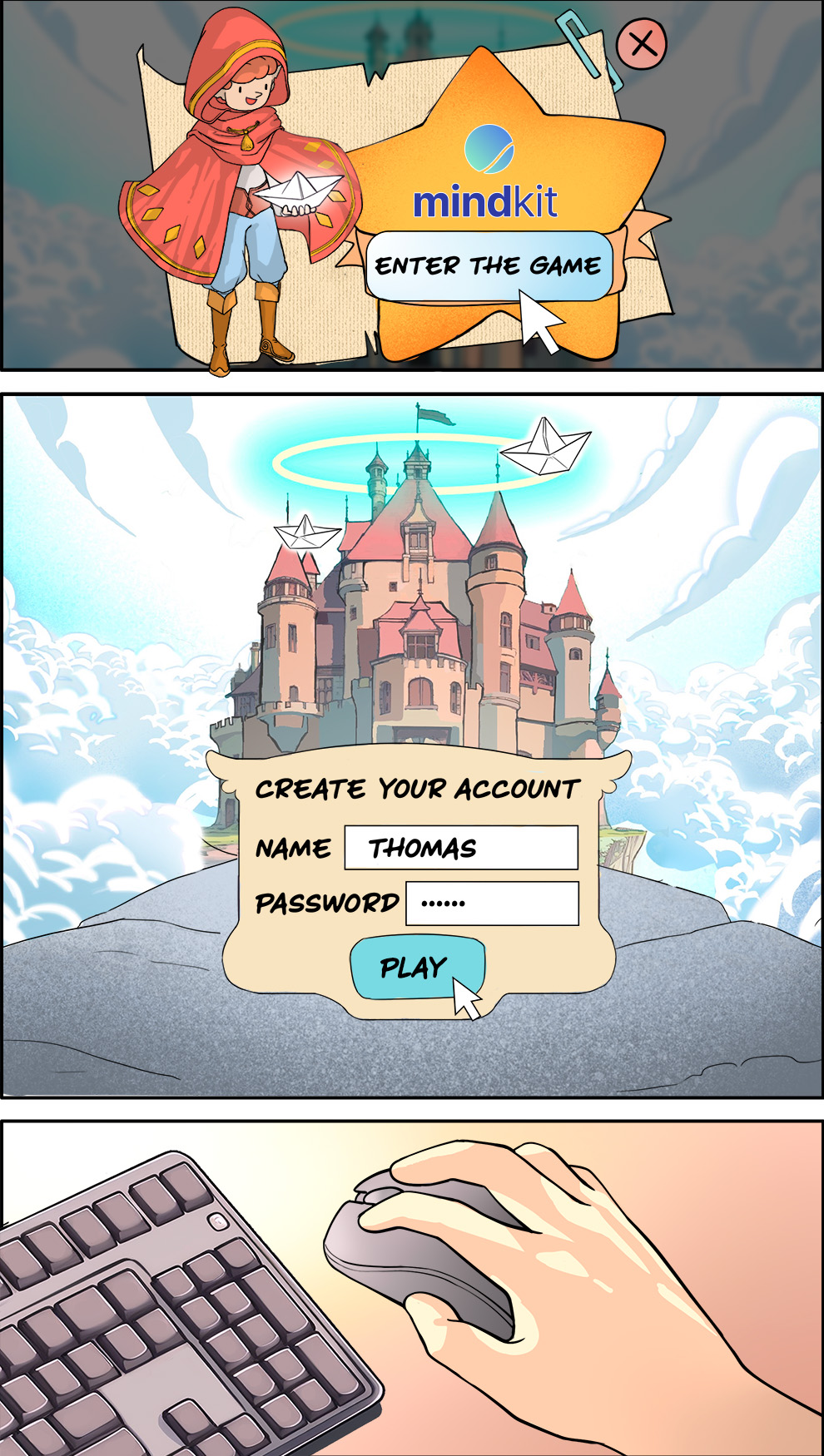
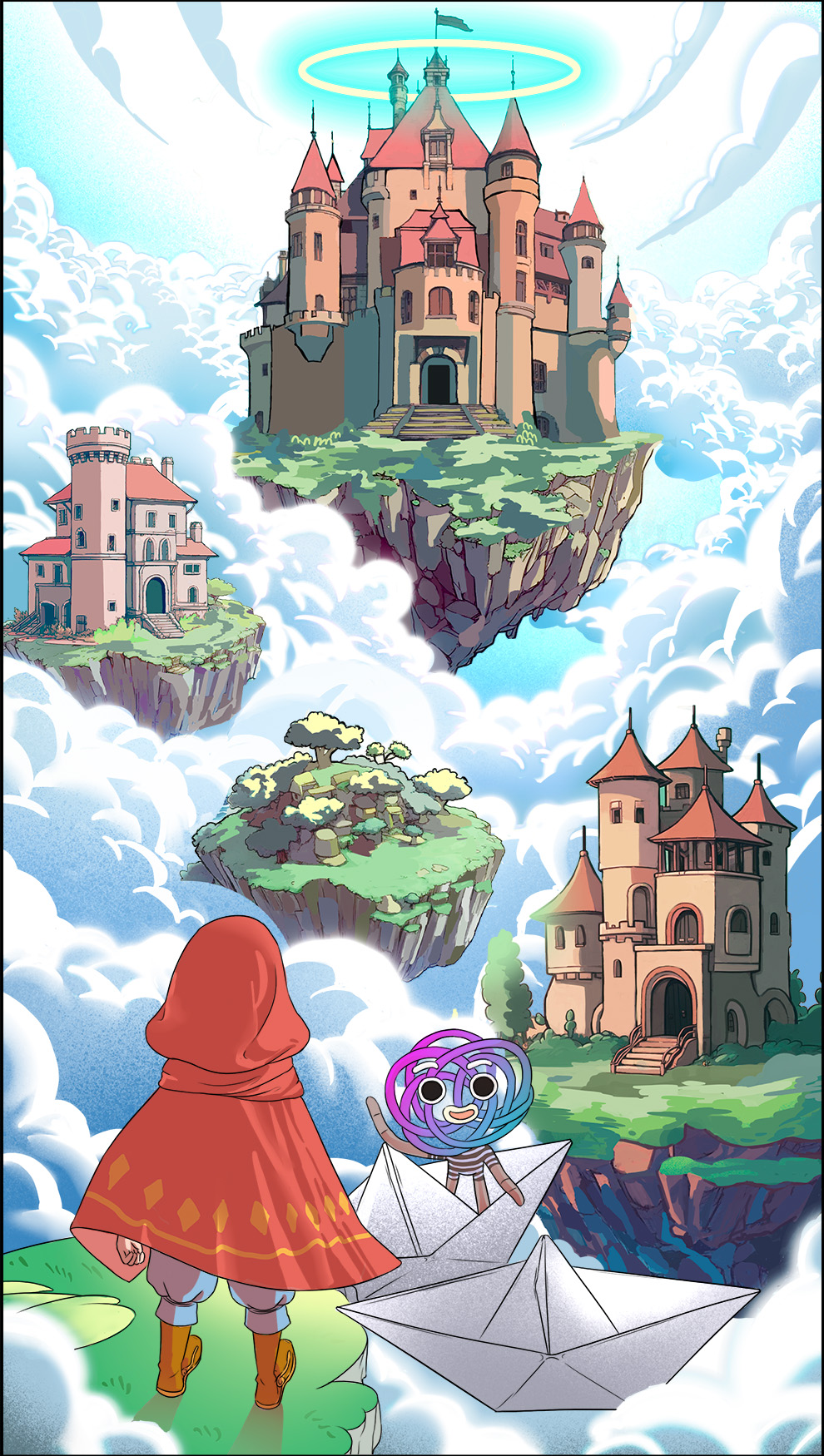
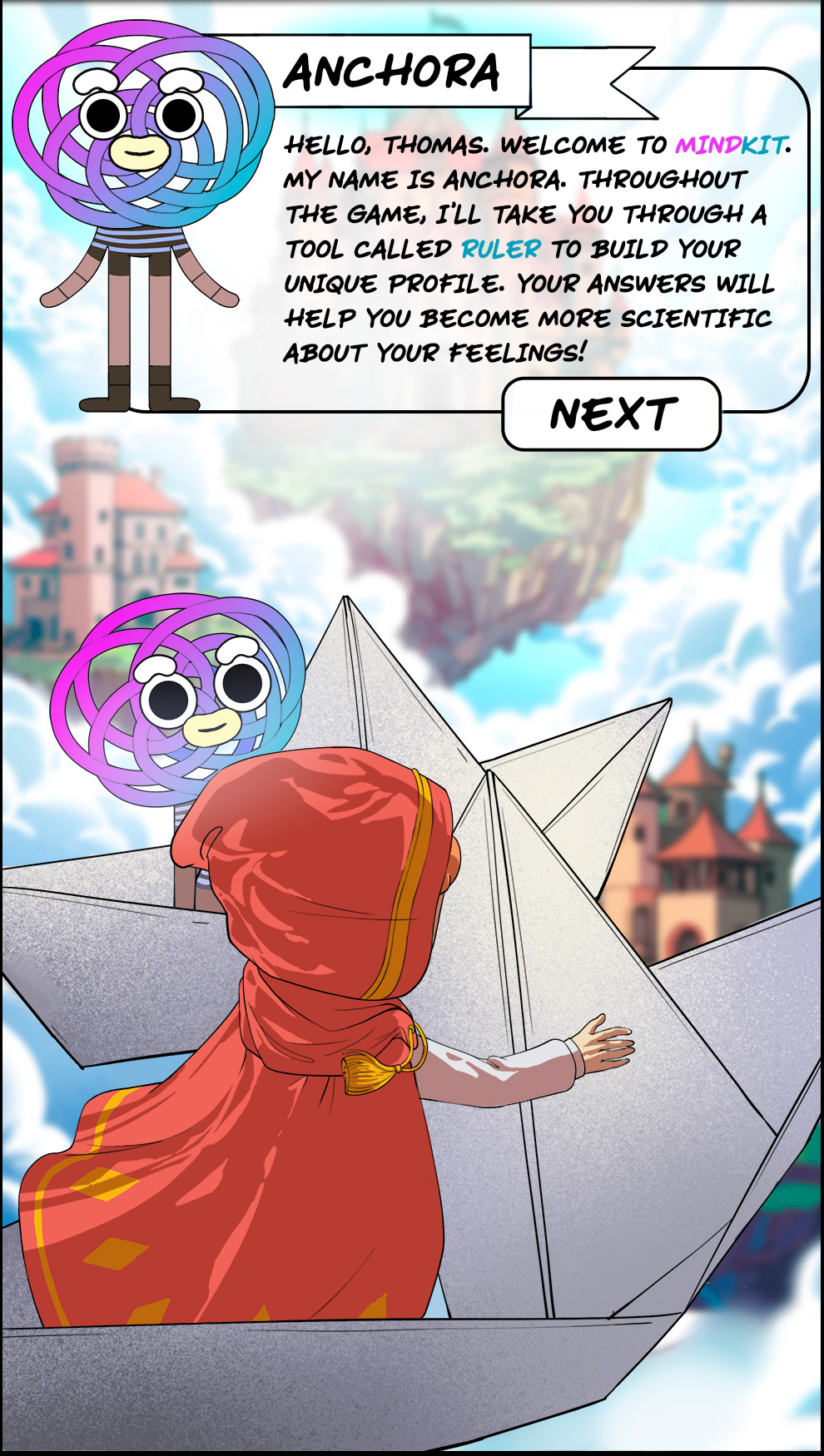

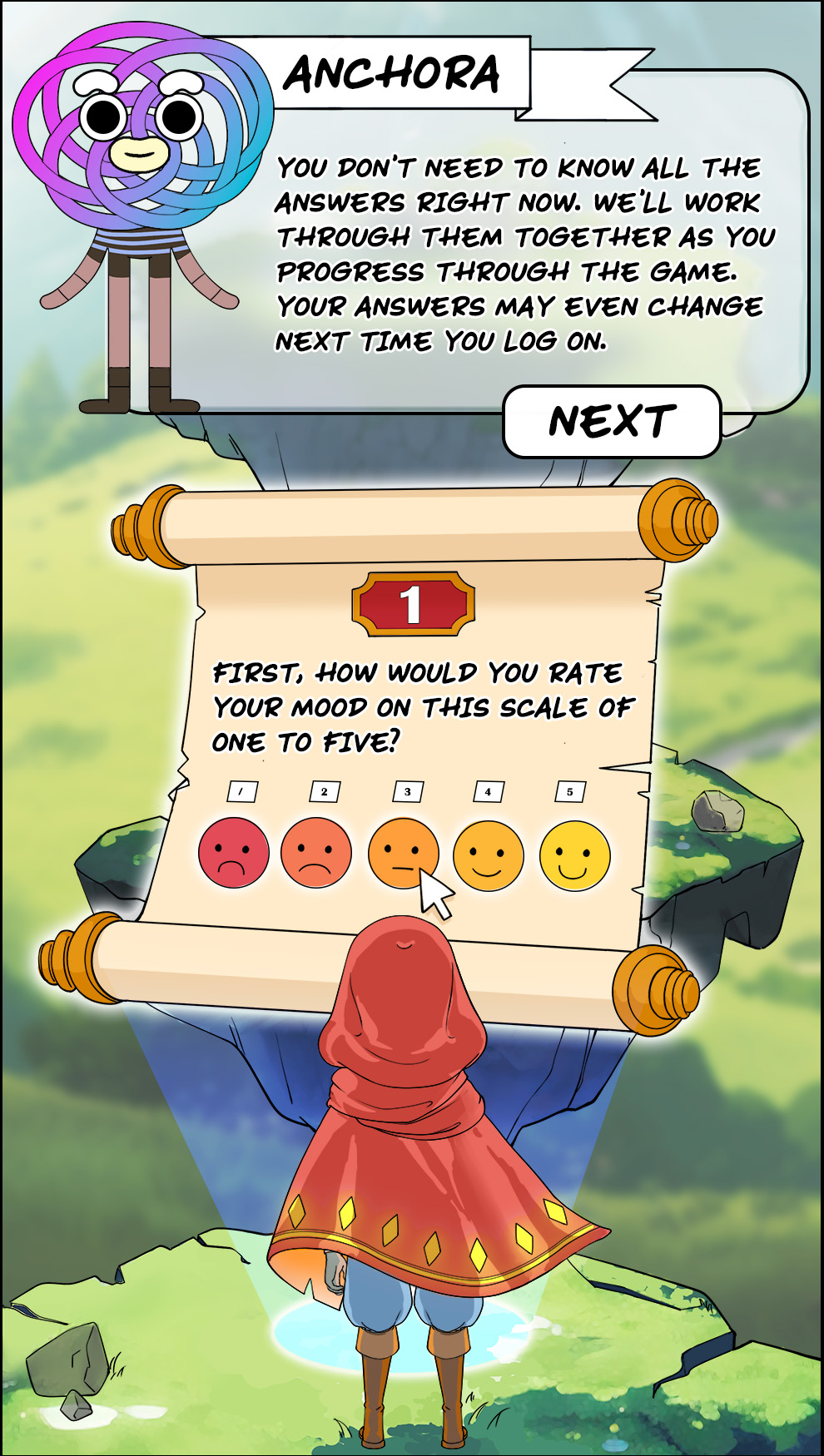
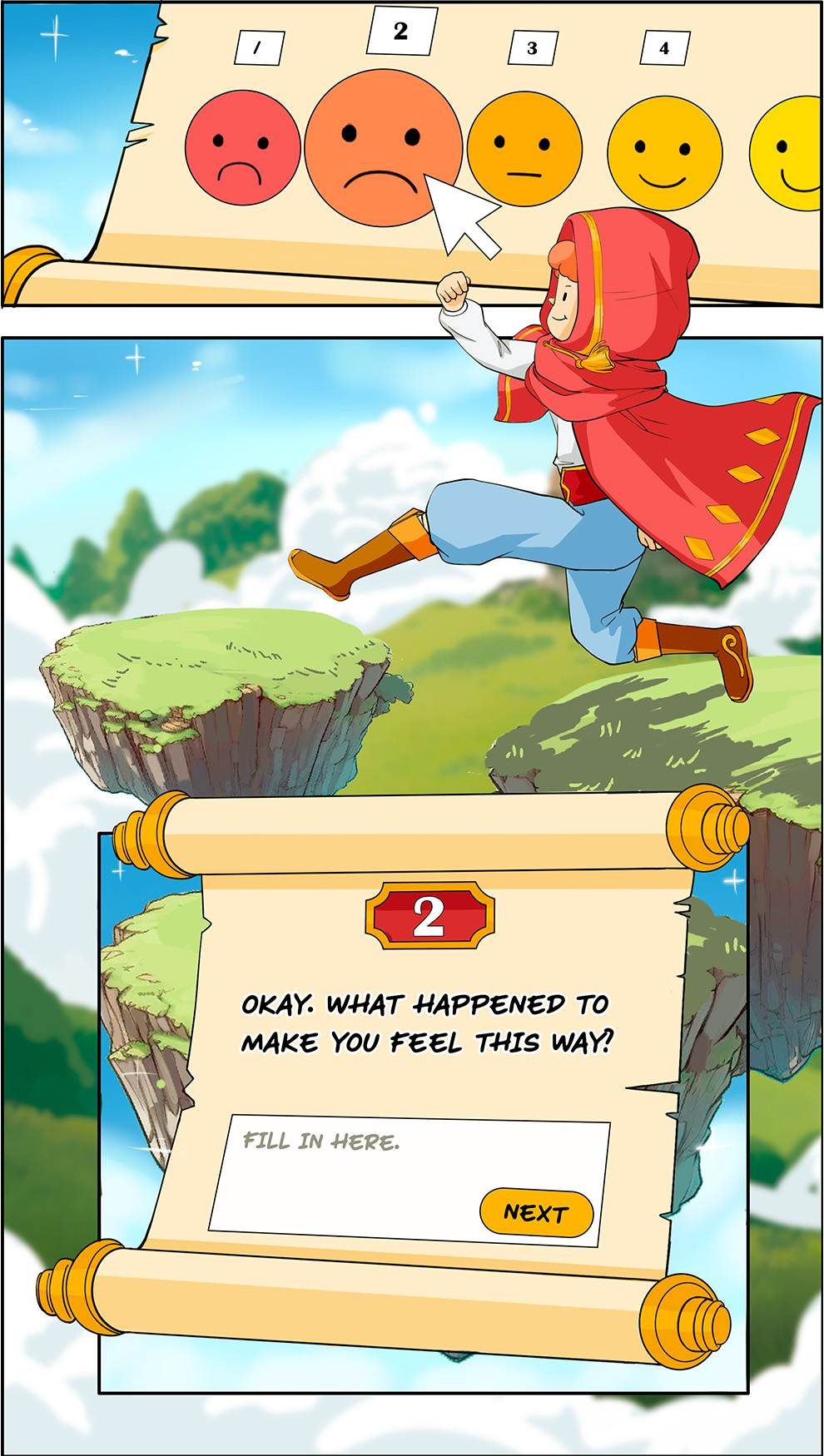
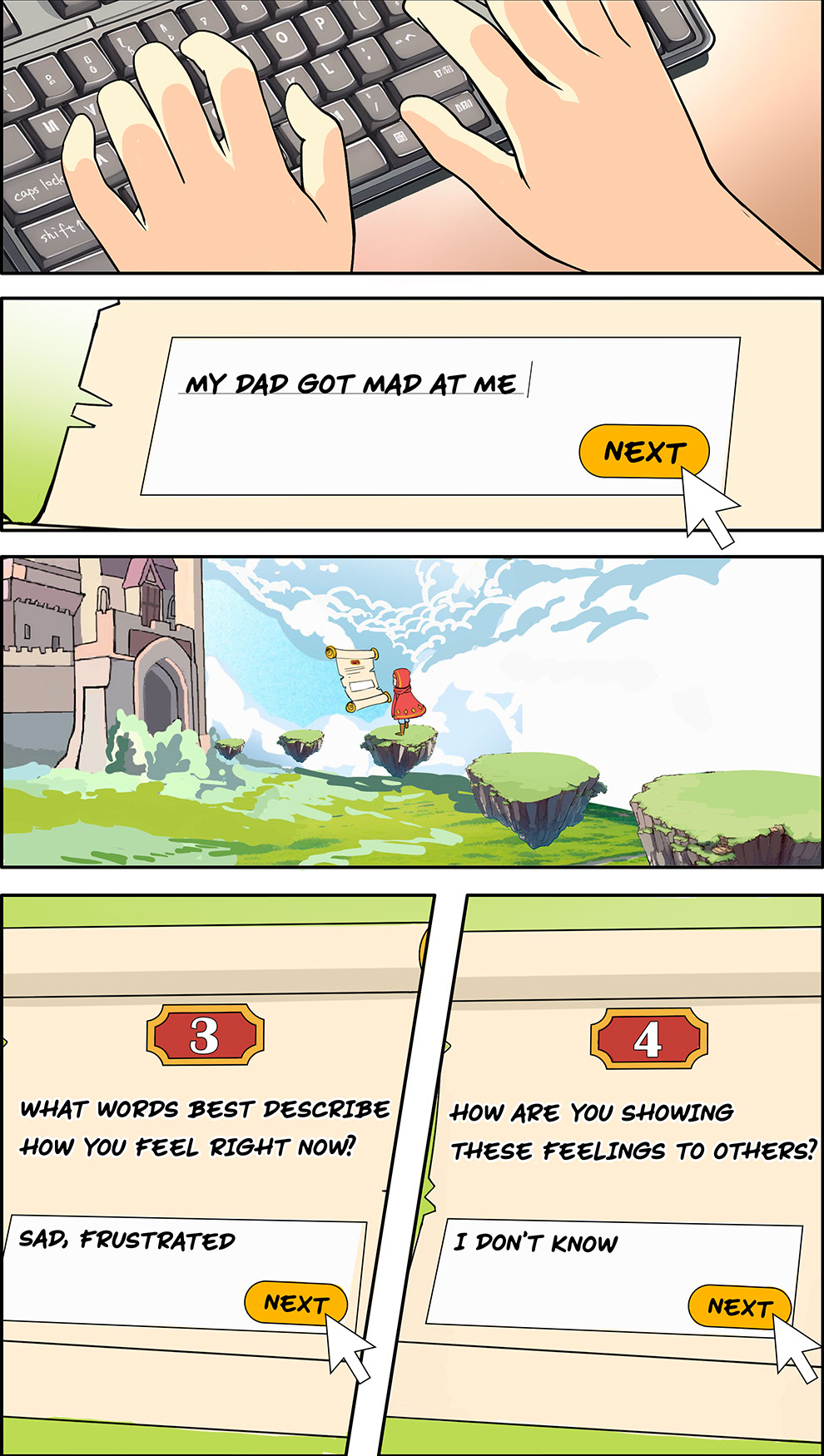
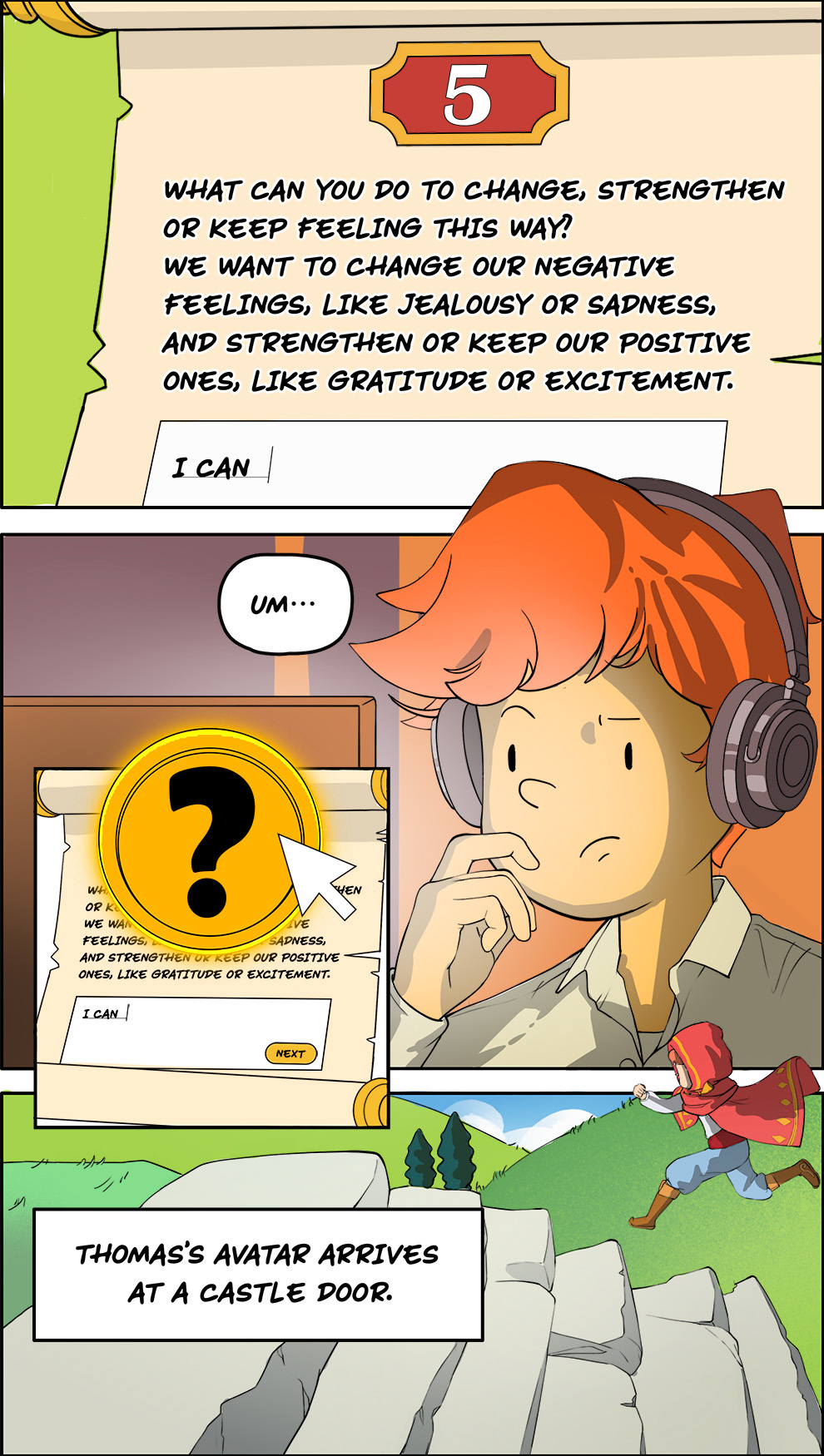
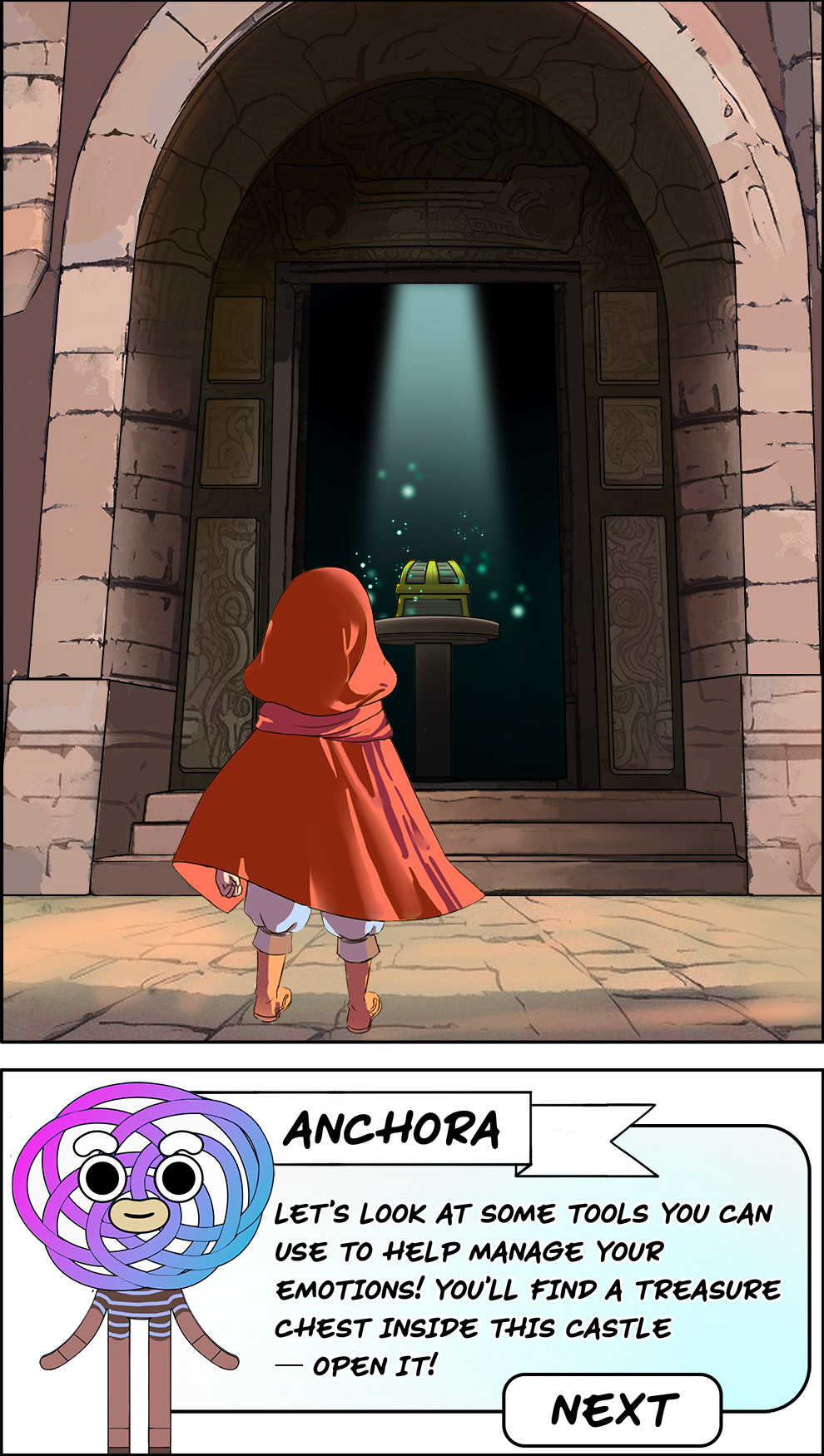
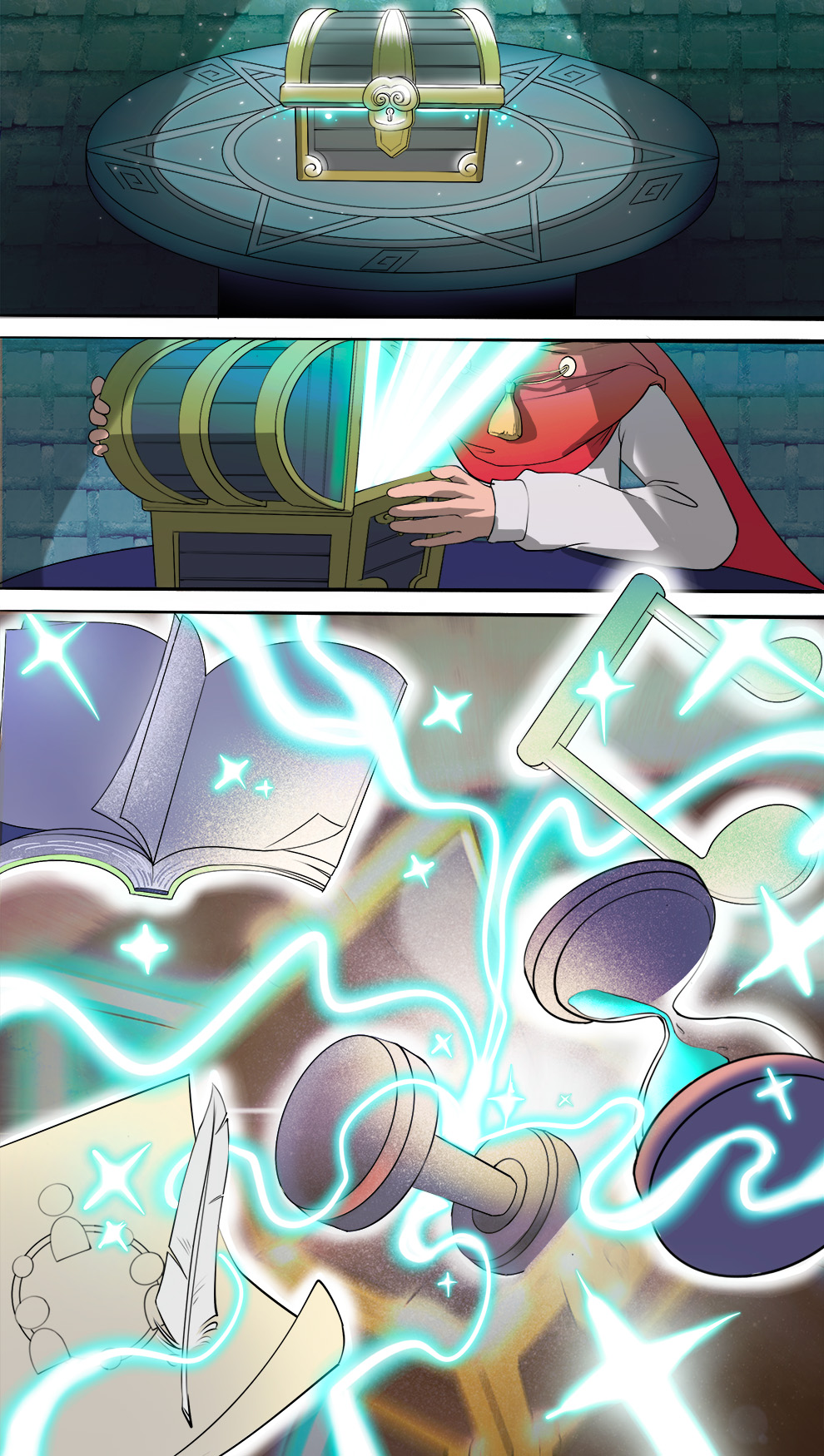
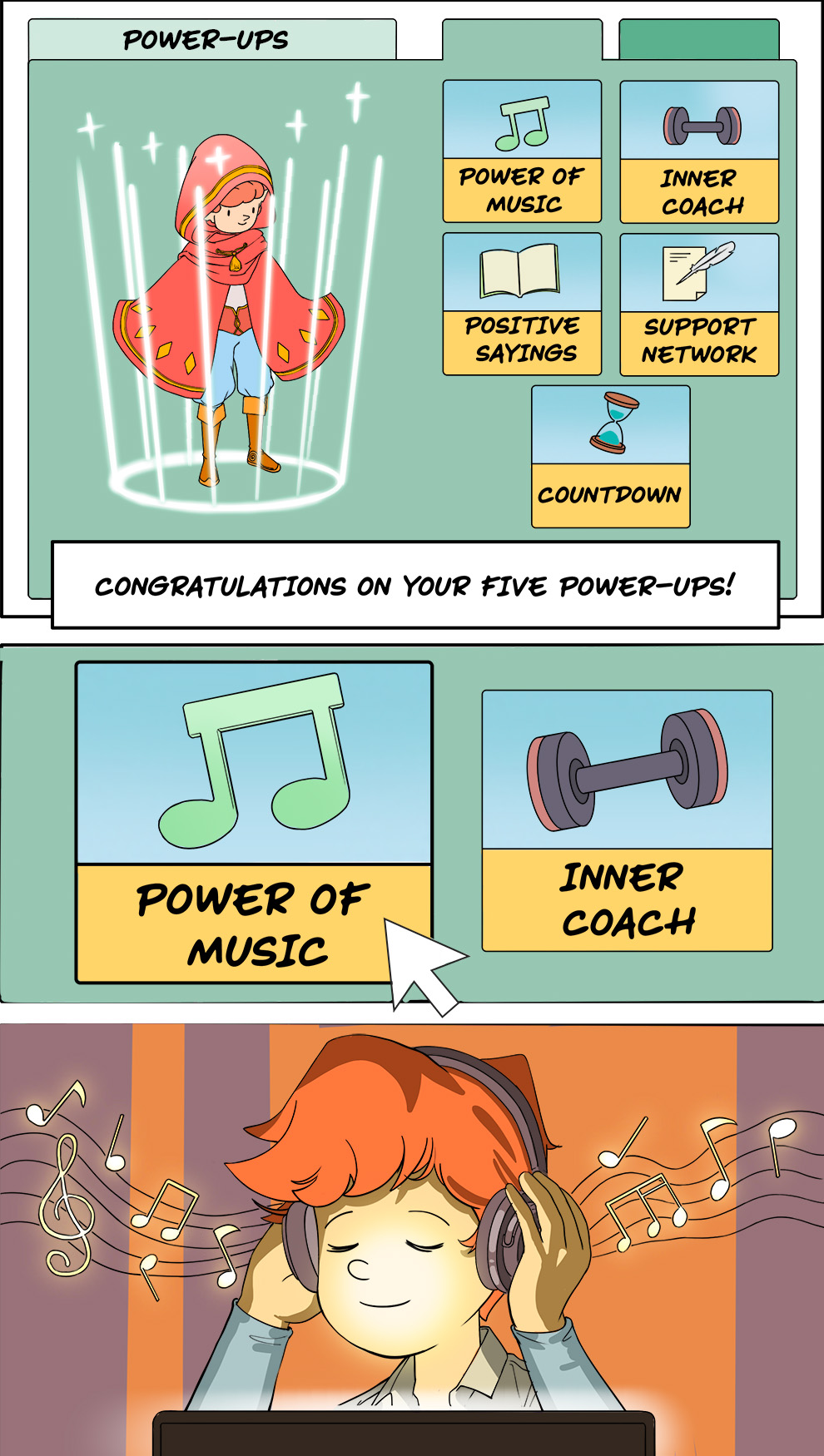
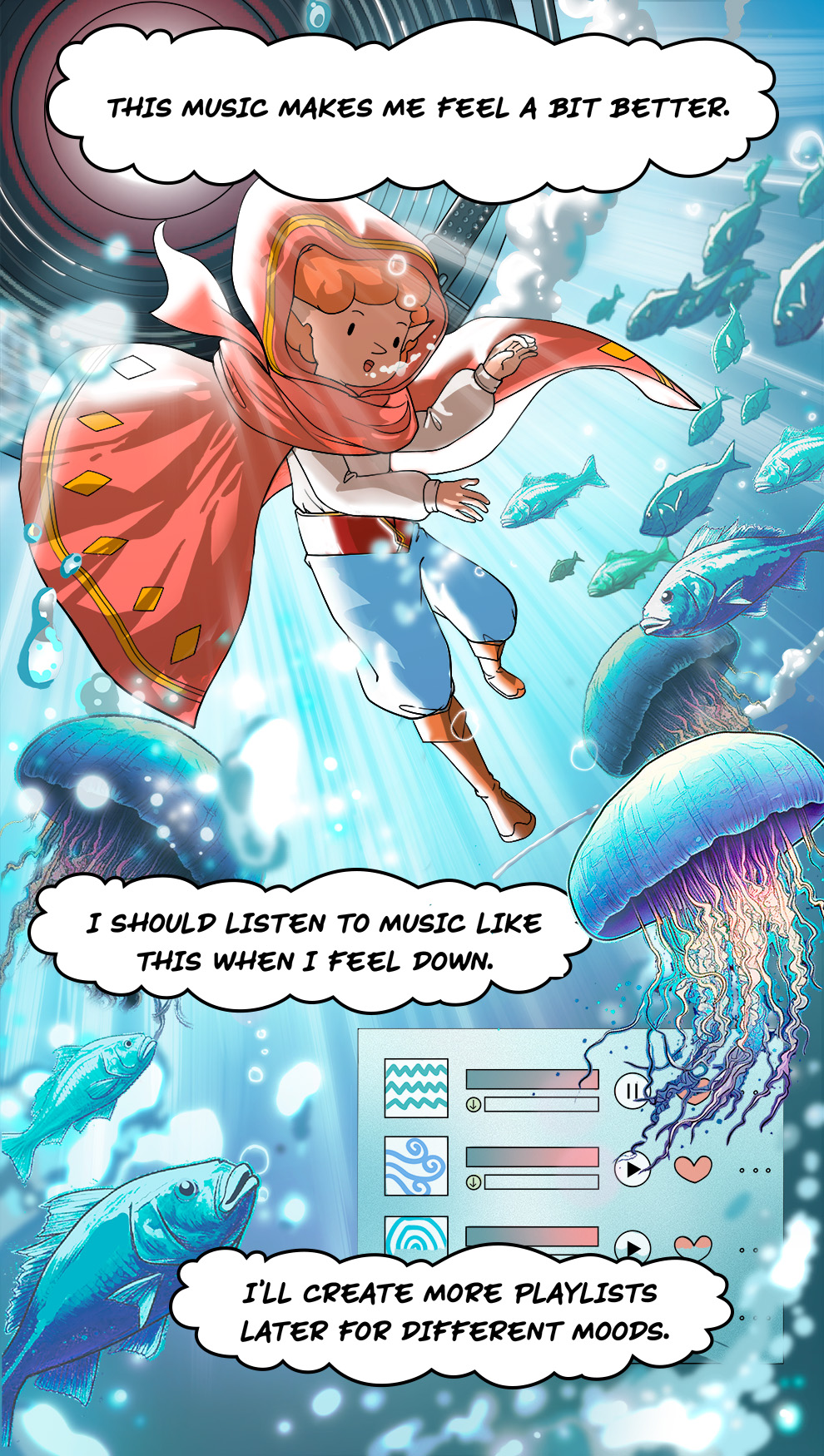
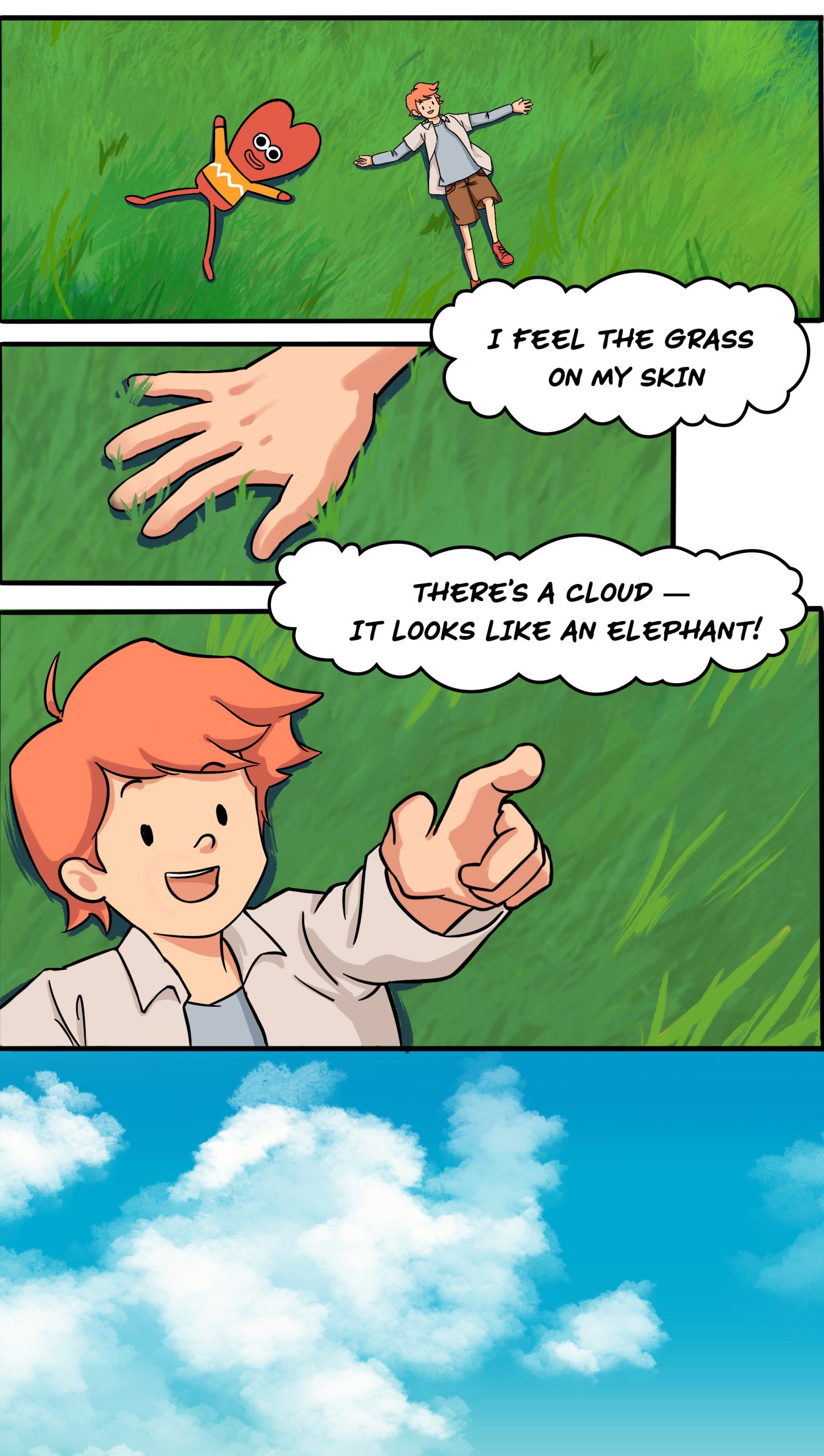
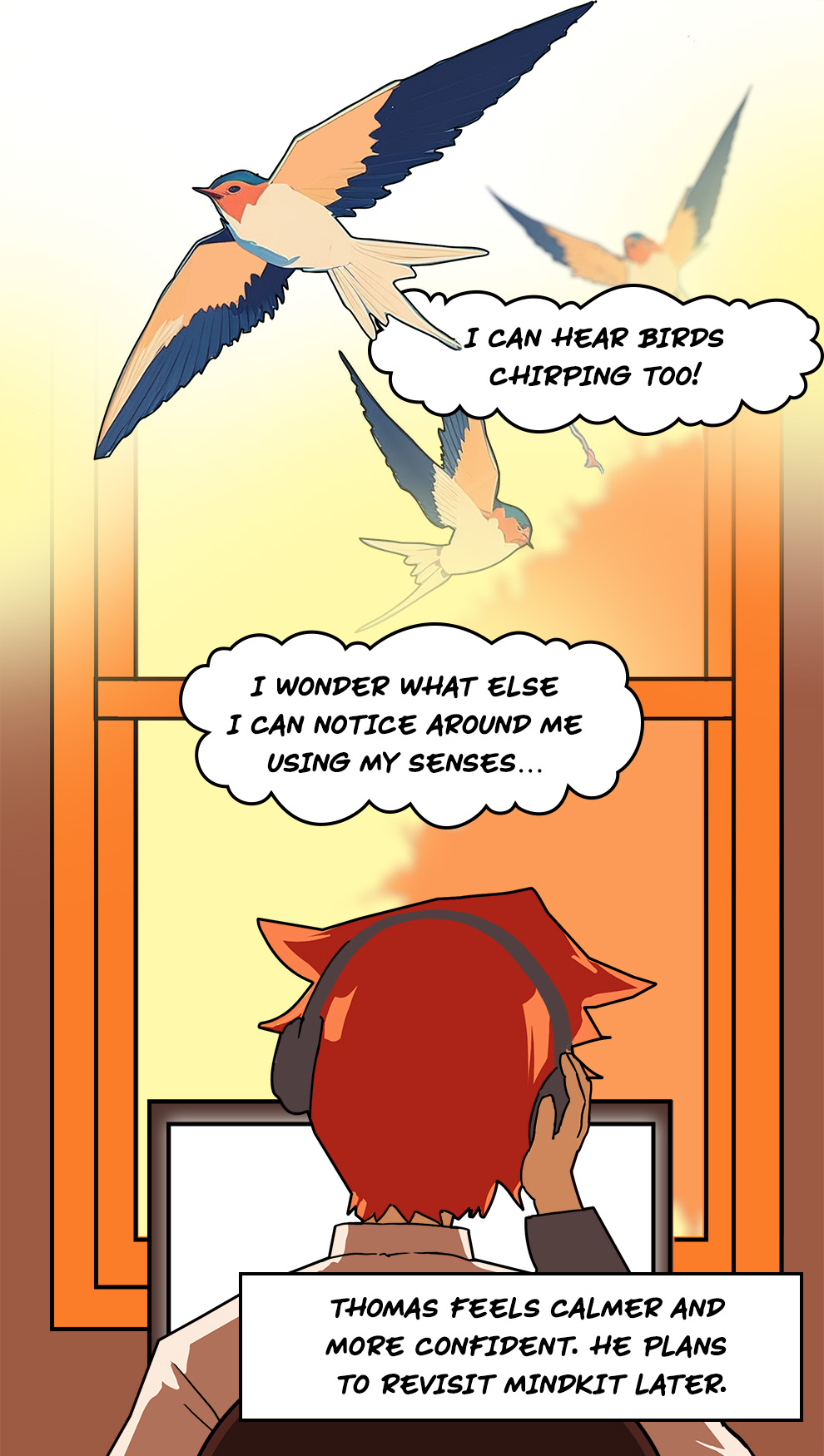

[After Thomas gets home, he decides to visit the MindKit website. “MindKit” appears on the screen along with a button with the words “ENTER THE GAME.]
[Thomas hits “ENTER THE GAME.”]
[A pop-up box appears:
- Create your account
- Name
- Password
- PLAY.]
[Thomas types his name and a password to create his account, and hits “PLAY.”]
[A dialogue box appears on the screen. A non-player character (NPC) in the game called “Anchora” takes Thomas’s avatar through a series of guided questions and eventually leads him through a portal to open his MindKit.]
(Anchora): Hello, Thomas. Welcome to MindKit. My name is Anchora. Throughout the game, I’ll take you through a tool called “Ruler” to build your unique profile. Your answers will help you become more scientific about your feelings!
[Thomas hits “NEXT.”]
(Anchora): You don’t need to know all the answers right now. We’ll work through them together as you progress through the game. Your answers may even change next time you log on.
[Thomas hits “NEXT.”
[A scroll appears on the screen. There are five emojis labelled one to five, with one being upset and five being happy.]
(Anchora): First, how would you rate your mood on this scale of one to five?
[Thomas selects “2.”]
[Another scroll appears with a question and text box with the words “FILL IN HERE.”]
(Anchora): Okay. What happened to make you feel this way?
[Thomas types into the box “My dad got mad at me” and hits “NEXT.”]
(Anchora): What words best describe how you feel right now?
[Thomas types into the box “Sad, frustrated” and hits “NEXT.”
(Anchora): How are you showing these feelings to others?
[Thomas types ”I don’t know” and hits “NEXT.”]
(Anchora): What can you do to change, strengthen or keep feeling this way? We want to change our negative feelings, like jealousy or sadness, and strengthen or keep our positive ones, like gratitude or excitement.
[Thomas starts to type, “I can…” He looks deep in thought.]
(Thomas): Um…
[A question mark button appears and he clicks on it.]
[Thomas’s avatar arrives at a castle door.]
(Anchora): Let’s look at some tools you can use to help manage your emotions! You’ll find a treasure chest inside this castle — open it!
[Thomas goes through the castle door and opens the treasure chest. Several game power-ups pop out.]
[A list of power-ups appears with the message “Congratulations on your five power-ups!”:
- Power of music
- Inner coach
- Positive sayings
- Support network
- Countdown]
[After looking through them, he picks the music power-up and music starts to play in the background.]
(Thomas): This music makes me feel a bit better. I should listen to music like this when I feel down. I’ll create more playlists later for different moods.
[Next, Thomas selects the pen and paper power-up. A group icon appears at the top of the page along with the title,”MY SUPPORT NETWORK.”]
(Thomas): I’ll use this pen and paper to create a list of supportive people I can talk to, such as my friends or teachers, as well as ways I can reach out to them. I’ll keep my list in a safe place and reach out to the people on it when I need some support.
[Thomas starts to write his list:
MY SUPPORT NETWORK:
- My guidance counsellor — I can go to his office at lunch, explain how I’m feeling and ask him to help me with my problem.
- My best friend
- My uncle]
[Thomas selects the timer power-up.]
[Icons representing the five senses with instructions appear around the timer: 5 THINGS YOU CAN SEE, 4 THINGS YOU CAN TOUCH OR FEEL, 3 THINGS YOU CAN HEAR, 2 THINGS YOU CAN SMELL, 1 THING YOU CAN TASTE.]
(Thomas): This tool uses my five senses to help me focus on the present and take my mind off any negative feelings for a little while.
[Anchora lies on the grass with Thomas. They look at the sky together.]
(Thomas): I feel the grass on my skin. There’s a cloud — it looks like an elephant! I can hear birds chirping too! I wonder what else I can notice around me using my senses…
[Thomas feels calmer and more confident. He plans to revisit MindKit later.]
[Cut scene to Thomas wearing his headphones while listening to music.]
THE END








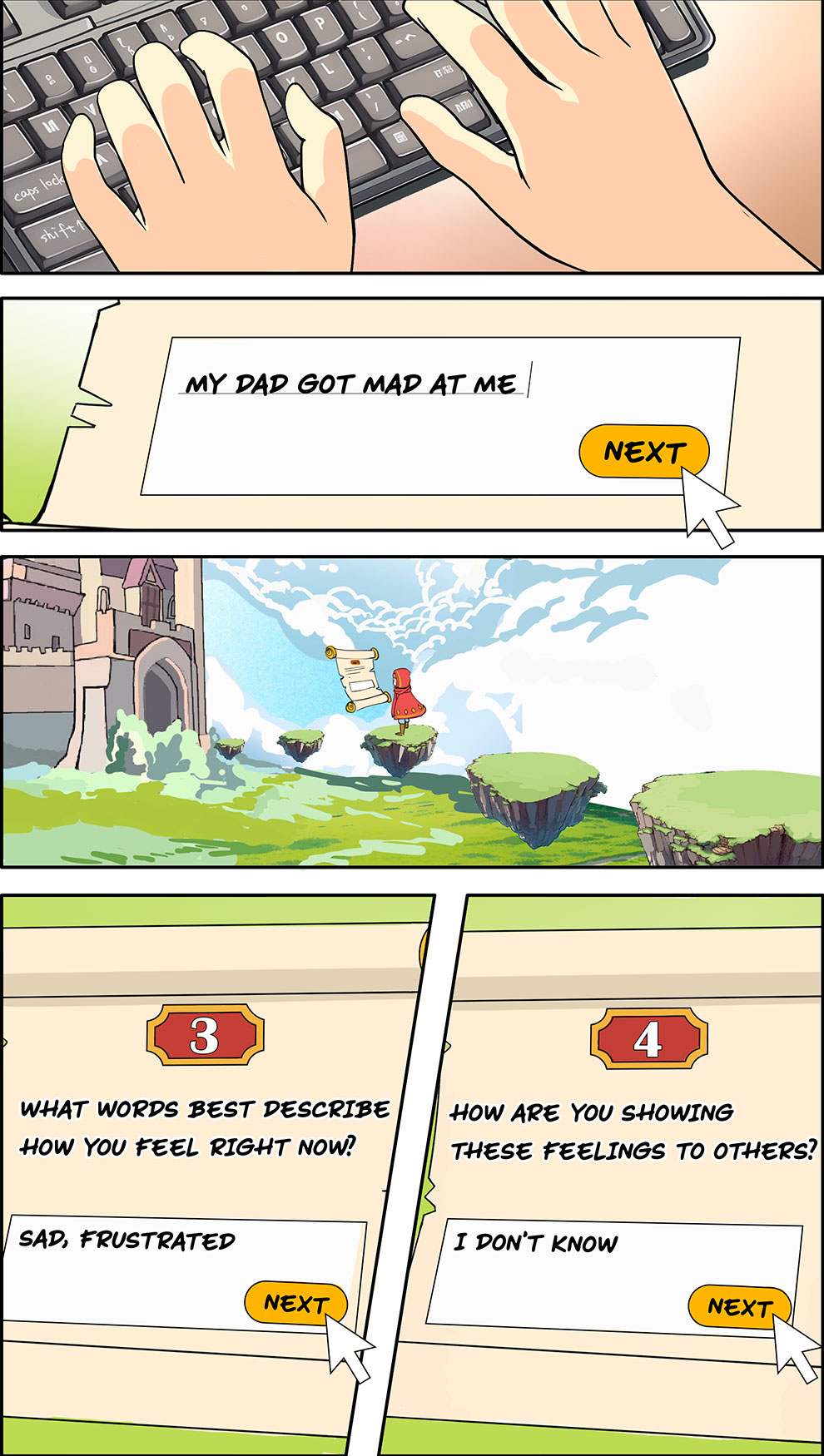
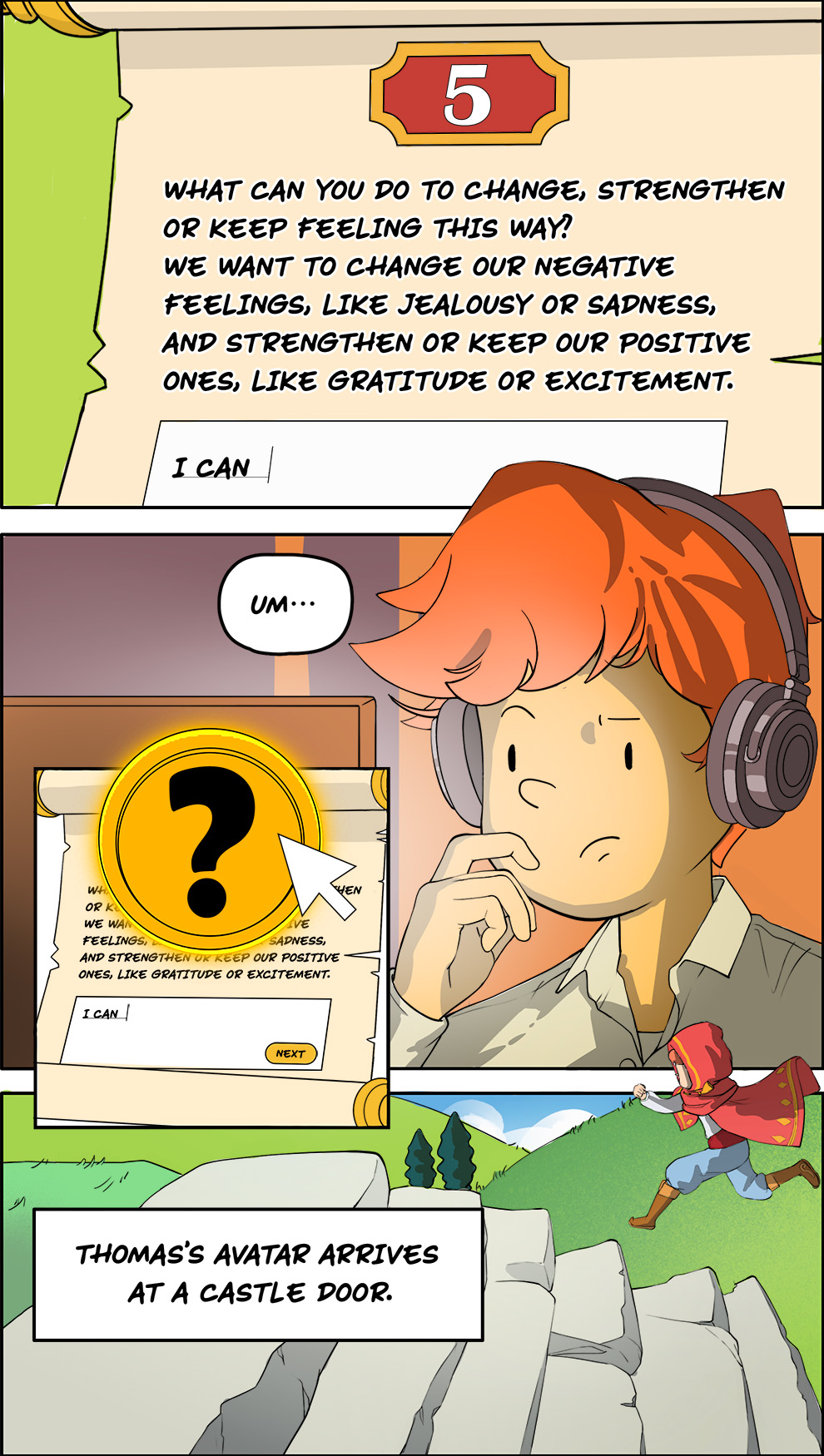




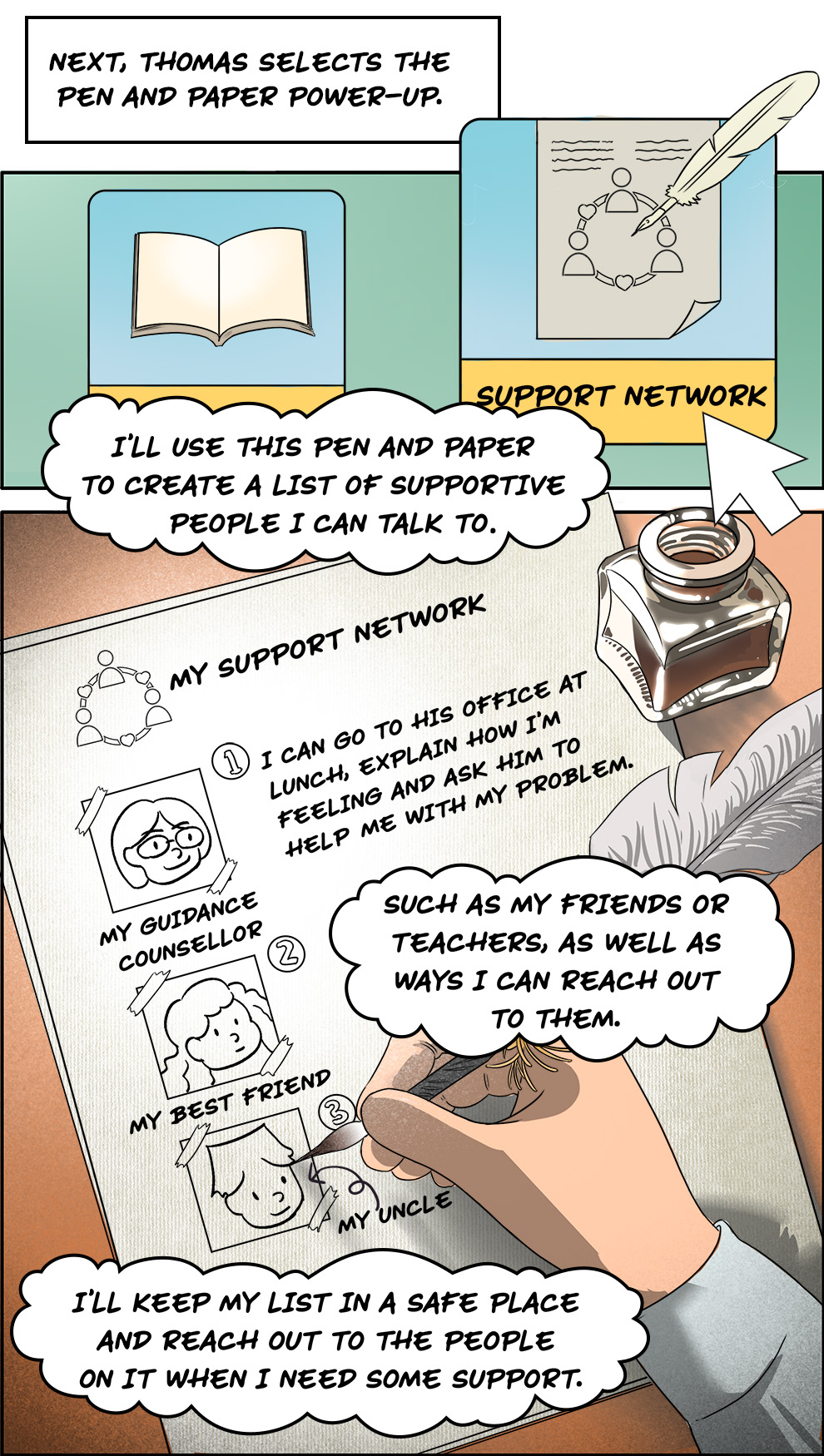
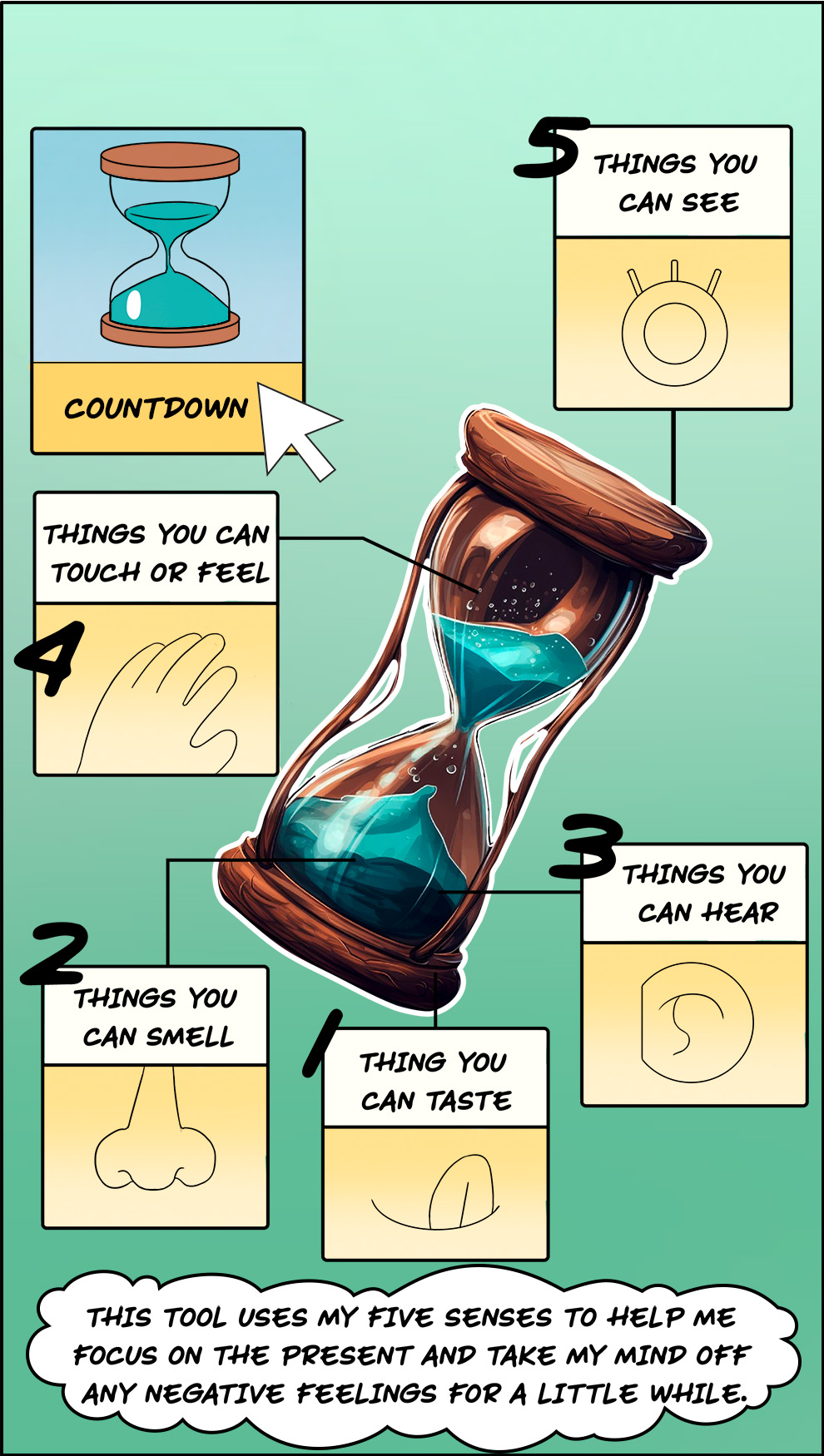



[After Thomas gets home, he decides to visit the MindKit website. MINDKIT appears on the screen along with a button with the words ENTER THE GAME.]
[Thomas hits ENTER THE GAME.]
[A pop-up box appears:
- CREATE YOUR ACOUNT
- NAME
- PASSWORD
- PLAY]
[Thomas types his name and a password to create his account, and hits PLAY.]
[A dialogue box appears on the screen. A non-player character (NPC) in the game called “Anchora” takes Thomas’s avatar through a series of guided questions and eventually leads him through a portal to open his MindKit.]
[Anchora] Hello, Thomas. Welcome to MindKit. My name is Anchora. Throughout the game, I’ll take you through a tool called “Ruler” to build your unique profile. Your answers will help you become more scientific about your feelings!
[Thomas hits NEXT.]
[Anchora] You don’t need to know all the answers right now. We’ll work through them together as you progress through the game. Your answers may even change next time you log on.
[Thomas hits NEXT.]
[A scroll appears on the screen. There are five emojis labelled one to five, with one being upset and five being happy.]
[Anchora] First, how would you rate your mood on this scale of one to five?
[Thomas selects 2.]
[Another scroll appears with a question and text box with the words FILL IN HERE.]
[Anchora] Okay. What happened to make you feel this way?
[Thomas types into the box “My dad got mad at me” and hits NEXT.]
[Anchora] What words best describe how you feel right now?
[Thomas types into the box “Sad, frustrated” and hits NEXT.
[Anchora] How are you showing these feelings to others?
[Thomas types “I don’t know” and hits NEXT.]
[Anchora] What can you do to change, strengthen or keep feeling this way? We want to change our negative feelings, like jealousy or sadness, and strengthen or keep our positive ones, like gratitude or excitement.
[Thomas starts to type, “I can…” He looks deep in thought.]
(Thomas) Um…
[A question mark button appears and he clicks on it.]
[Thomas’s avatar arrives at a castle door.]
[Anchora] Let’s look at some tools you can use to help manage your emotions! You’ll find a treasure chest inside this castle — open it!
[Thomas goes through the castle door and opens the treasure chest. Several game power-ups pop out.]
[A list of power-ups appears with the message CONGRATULATIONS ON YOUR FIVE POWER-UPS!
- POWER OF MUSIC
- INNER COACH
- POSITIVE SAYINGS
- SUPPORT NETWORK
- COUNTDOWN]
[After looking through them, he picks the music power-up and music starts to play in the background.]
[Thomas’s thoughts] This music makes me feel a bit better. I should listen to music like this when I feel down. I’ll create more playlists later for different moods.
[Next, Thomas selects the pen and paper power-up. A group icon appears at the top of the page along with the title MY SUPPORT NETWORK.]
[Thomas’s thoughts] I’ll use this pen and paper to create a list of supportive people I can talk to, such as my friends or teachers, as well as ways I can reach out to them. I’ll keep my list in a safe place and reach out to the people on it when I need some support.
[Thomas starts to write his list:
MY SUPPORT NETWORK:
- My guidance counsellor — I can go to his office at lunch, explain how I’m feeling and ask him to help me with my problem.
- My best friend
- My uncle]
[Thomas selects the timer power-up.]
[Icons representing the five senses with instructions appear around the timer: 5 THINGS YOU CAN SEE, 4 THINGS YOU CAN TOUCH OR FEEL, 3 THINGS YOU CAN HEAR, 2 THINGS YOU CAN SMELL, 1 THING YOU CAN TASTE.]
[Thomas’s thoughts] This tool uses my five senses to help me focus on the present and take my mind off any negative feelings for a little while.
[Thomas lies on the grass with an NPC representing Mental Health. They look at the sky together.]
[Thomas’s thoughts] I feel the grass on my skin. There’s a cloud — it looks like an elephant! I can hear birds chirping too! I wonder what else I can notice around me using my senses…
[Thomas feels calmer and more confident. He plans to revisit MindKit later.]
[Thomas wears his headphones while listening to music.]
THE END
Let’s become emotional scientists
Before you know which tool or strategy to use from your MindKit, you need to become more curious and interested in learning about your emotions. Take time to explore what you’re feeling, the strength of those feelings and any potential reasons for them. You can then choose the best way to manage your emotions and help yourself feel better.
One way to do this is through something called Ruler
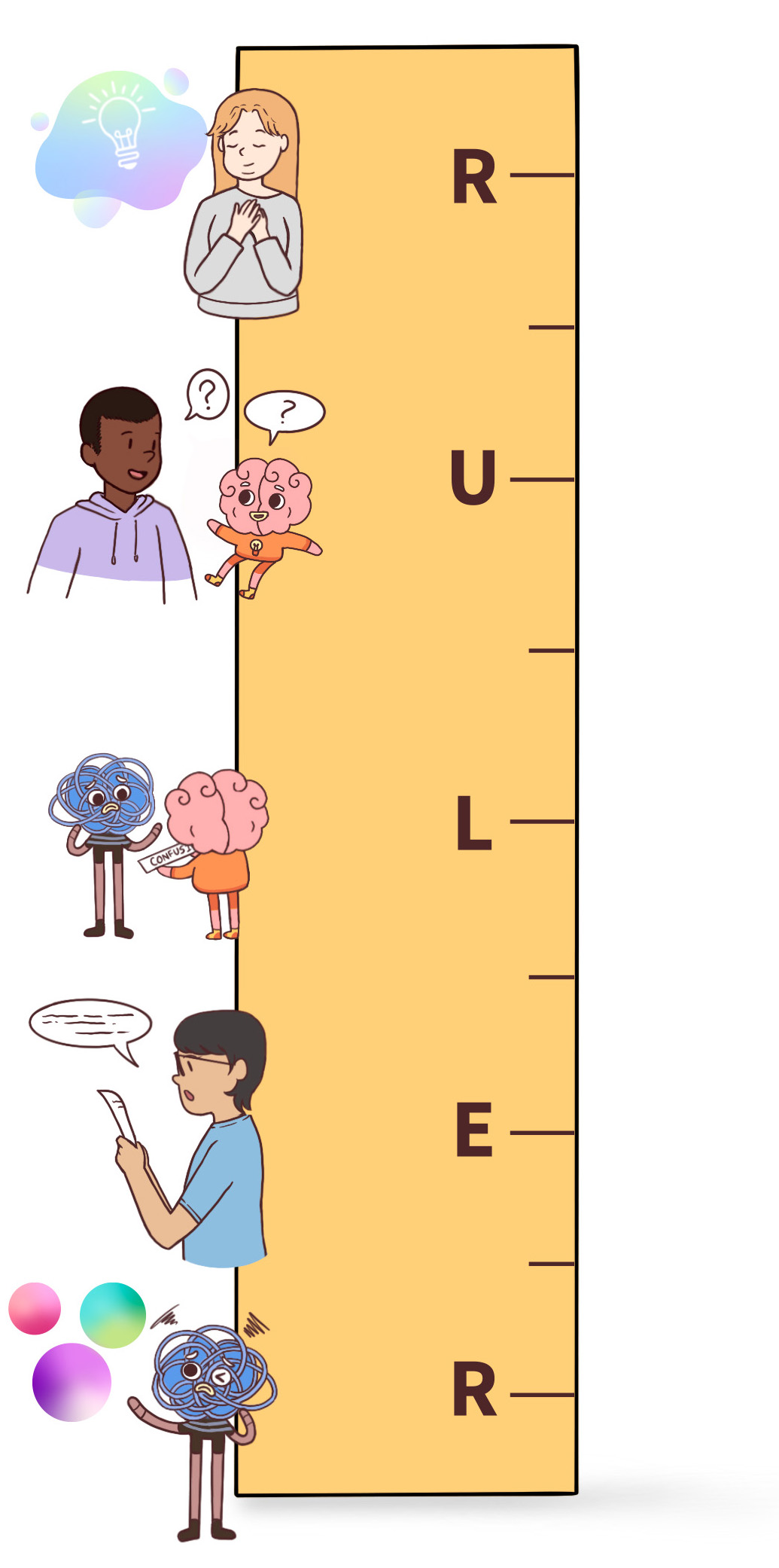
Recognize...
how you’re feeling. How would you rate your current mood on a scale of one to five? Think about your happiness and energy levels when you make your rating.
Understand...
why you’re feeling that way. What’s happened to make you feel this way?
Label...
the specific emotion so you can talk about your feelings. What words best describe how you’re feeling?
Express...
your feelings in a way that others can understand and help you. What actions or facial expressions can you use to show your feelings to others?
Regulate...
your emotions by using helpful coping tools and strategies. What steps can you take to help change or reduce difficult feelings and strengthen or keep positive ones?
Let’s kick-start your MindKit by adding some coping tools
It’s important to learn how to tune into what your mind and body need. You can use this knowledge to create a MindKit of strategies and tools that can help you overcome challenges and look after your mental health. Think of it like PIE!
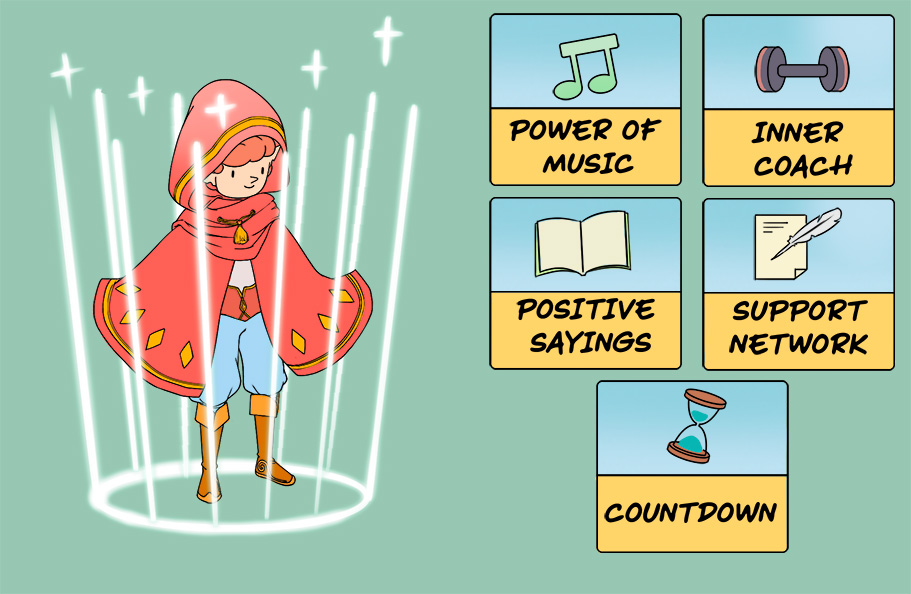
Think of it like PIE!
(Click/tap on the tiles to learn more about PIE)
Priors — What have you
used before?
Priors
What have you done before that you know will make you feel happy, silly, carefree or joyful? Do you love mountain biking? Painting? Reading books?
Internals — What can you do for and by yourself?
Internals
These tools are useful to have in your MindKit because you can do them any time of day or night. Some examples are listening to music, journalling, going for a walk, cooking, drawing or taking a shower.
Externals —What can you do with others?
Externals
These tools are things that require you to connect with someone. Some examples could include spending time with friends or Family or asking a trusted adult for advice
or support.
It's important to remember that not all coping tools will work for you.

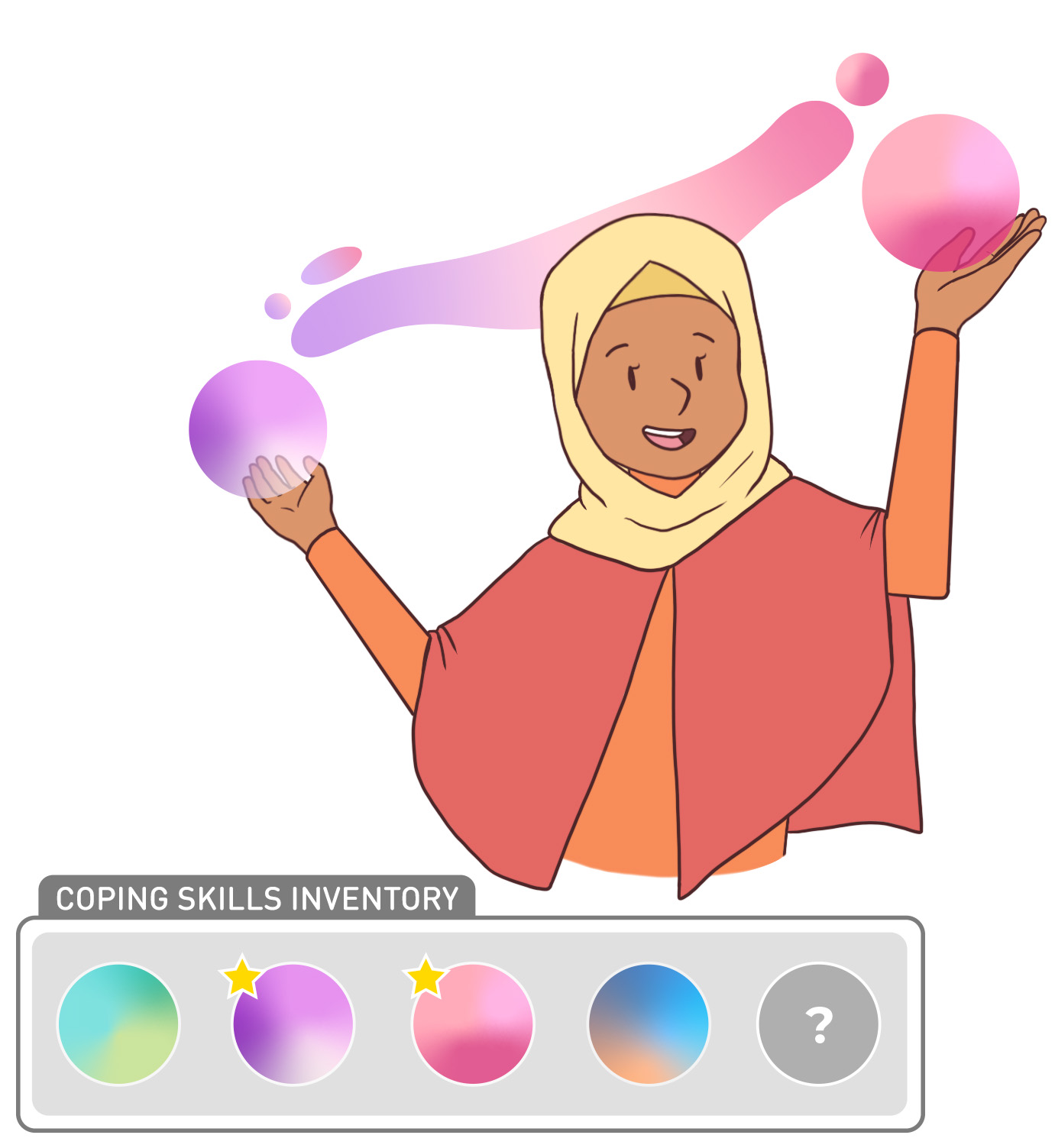
The key is to try out as many as you can and build a MindKit with the ones you like best
As you grow and live life, you’ll encounter new challenges that may push you to explore new tools and approaches
So keep updating your MindKit with new ways of coping that work best for you!
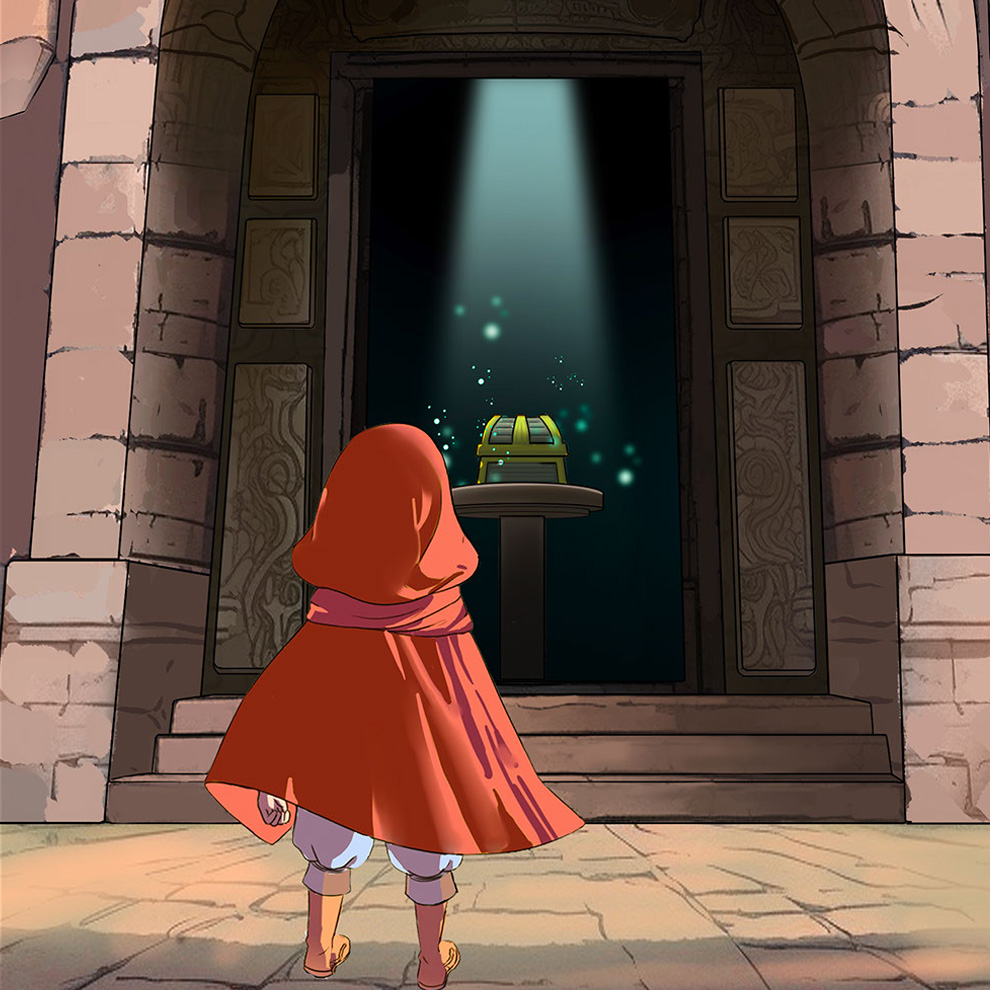
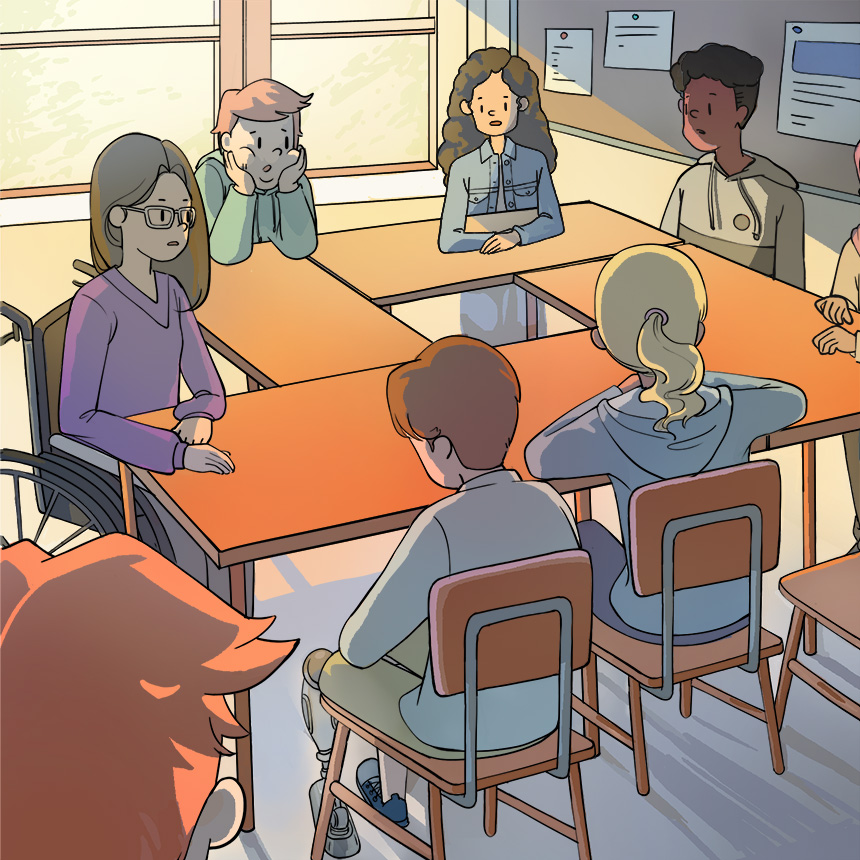
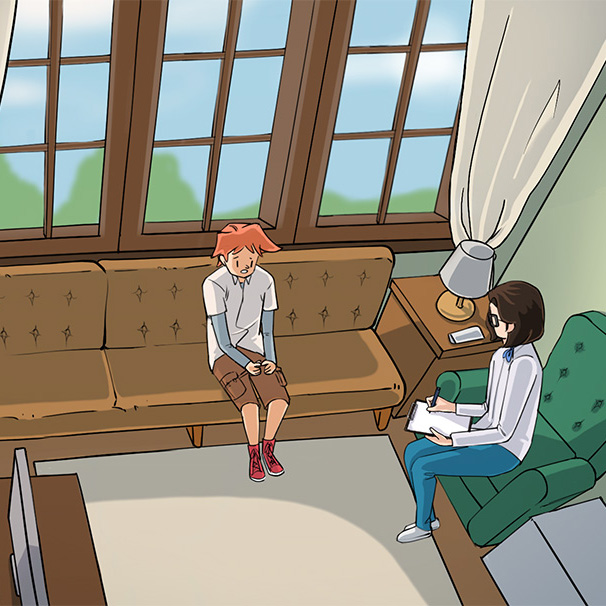
Remember that you’re not alone and there’s support available if you need it.
Here are some hands-on tools to get started!
Let’s start building your toolkit! Here are five hands-on tools and strategies to get your MindKit started:
1
Make playlists for different emotions and use the right music to lift your mood
Music has the power to influence how you feel.
Instructions:
- First, figure out what you’re currently feeling. Then ask yourself how you’d like to be feeling and thinking instead. Make multiple playlists for whatever you’d like to feel.
- For example, if you’re feeling sad, you might want to make a playlist full of songs that make you smile. If you’re feeling helpless, you could make a playlist that makes you feel strong.
2
Practise thinking in a way that trains your inner coach to be stronger than your inner critic
Everyone has an inner coach (the voice that helps you think positive thoughts about yourself) and an inner critic (the voice that tells you all the reasons you’re not good enough and focuses on the negative). Try to train your inner coach to be stronger than your inner critic. Your thoughts are powerful!
Instructions:
- Start by listing things that your inner critic would say.
- Then, write down how your inner coach would respond.
- For example, instead of thinking: “My life will never be like it was,” try thinking: “Today might be a bad day but it won’t last forever. Tomorrow will be better.”
- Keep practising! Practice is key to strengthening your inner coach.
3
Make a list of your favourite positive sayings or phrases
Words can be a powerful tool for improving your mood.
Instructions:
- Take a moment to write down a couple of your favourite short phrases that help you think positive thoughts.
- Read these sayings when you need a bit of hope and encouragement.
- Keep adding sayings to your list!
4
Map out your personal support system
It can be difficult to reach out to others for help.
Instructions:
- Create a list of supportive people you know you can talk to, such as friends, Family members, teachers or community members.
- Reach out to the people on your list when you need to.
- To help get you started:
- Name an adult who can help you calm down
- Name a friend who can help you feel better
- Who can help you calm down at school? At home?
- Write down steps you can take to ask each person for help
5
Try doing a 5-4-3-2-1 countdown to use your senses and focus on what is around you
Paying attention to the moment can help reconnect you to the present and take your mind off any unhelpful feelings for a little while.
Instructions:
- Create a list of things around you that match up with your five senses:
- 5 things you can see (e.g. the sky, birds, your phone, a specific colour, your hands)
- 4 things you can touch or feel (e.g. a table, the carpet, wind on your face, a pet’s fur)
- 3 things you can hear (e.g. laughter, your own breathing, a dog barking)
- 2 things you can smell (e.g. a candle, fresh rain)
- 1 thing you can taste (e.g. a cup of tea)
- Take a calming breath between each item.
- Create a list of things around you that match up with your five senses: